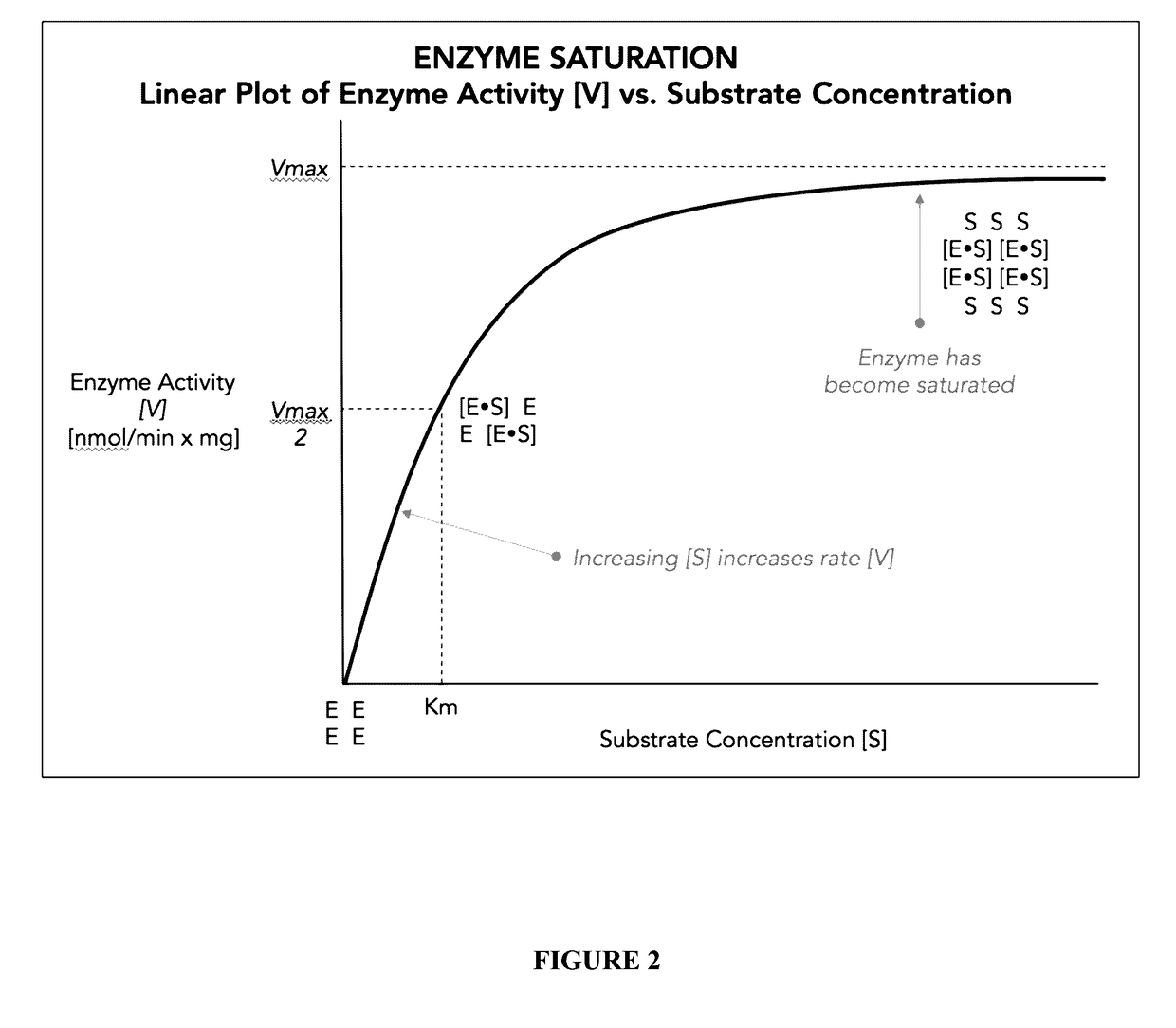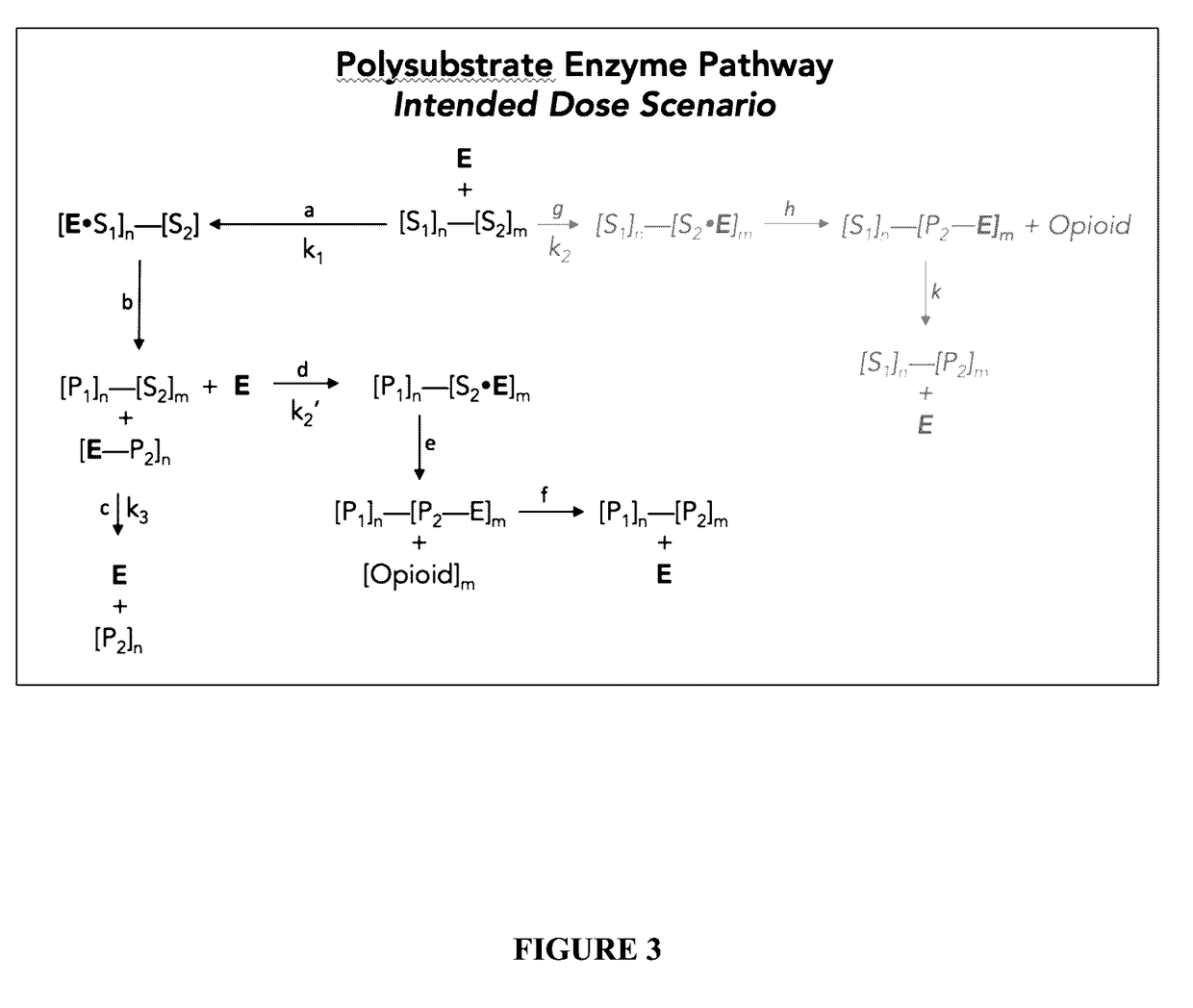Polysubunit opioid prodrugs resistant to overdose and abuse
a technology of opioid prodrugs and subunits, applied in the field of polysubunit opioid prodrugs resistant to overdose and abuse, can solve the problems of severe social and financial costs, nonmedical use and abuse of opioids, and pain under treatment, and achieve the effects of reducing the expected systemic exposure of delivered opioid agonists, inhibiting digestive enzymes, and saturating or inhibiting gi enzymes
- Summary
- Abstract
- Description
- Claims
- Application Information
AI Technical Summary
Benefits of technology
Problems solved by technology
Method used
Image
Examples
example 1
In Vitro Characterization of an Overdose Protection Mechanism with Compounds of the Disclosure
[1173]This example describes in vitro experiments with a compound of the disclosure to provide a mechanism of overdose protection. Specifically, this study was designed to assess the ability of increasing concentrations of compounds 2 and 3 to progressively inhibit trypsin activity.
[1174]The effect of increasing concentrations of compounds 2 and 3 on the rate and extent of the trypsin-catalyzed hydrolysis of a commercially available trypsin substrate Na-Benzoyl-L-arginine 4-nitroanilide hydrochloride was evaluated in the presence of trypsin (2,000 BAEE activity) in a pH 7.4 phosphate buffer at 37° C. in vitro. Both buffer alone (i.e. no trypsin) and trypsin (i.e. no compound 2 or 3) controls were run contemporaneously. The data are presented below in the Tables below, and clearly demonstrates the ability of compounds 2 and 3 to progressively inhibit trypsin in a concentration dependent mann...
example 2
In Vivo Demonstration of Non-Linear Pharmacokinetics (i.e. Overdose Protection) with Compounds of the Disclosure
[1175]This example describes in vivo experiments with a compound of the disclosure to demonstrate overdose protection (i.e. non-linear pharmacokinetics of delivered hydrocodone).
[1176]The effect of increasing oral doses of compounds 2 and 3 on the pharmacokinetics of delivered hydrocodone (i.e. measured plasma hydrocodone concentrations vs. time) was evaluated in dogs. Specific pharmacokinetics parameters of the delivered opioid were calculated (e.g. Cmax, Tmax, AUC) and are presented below in the Table below. This data clearly demonstrates the ability of increasing oral doses of compounds 2 and 3 of the invention to progressively attenuate the release of hydrocodone in vivo.
PUM
| Property | Measurement | Unit |
|---|---|---|
| composition | aaaaa | aaaaa |
| structure | aaaaa | aaaaa |
Abstract
Description
Claims
Application Information
 Login to View More
Login to View More - R&D
- Intellectual Property
- Life Sciences
- Materials
- Tech Scout
- Unparalleled Data Quality
- Higher Quality Content
- 60% Fewer Hallucinations
Browse by: Latest US Patents, China's latest patents, Technical Efficacy Thesaurus, Application Domain, Technology Topic, Popular Technical Reports.
© 2025 PatSnap. All rights reserved.Legal|Privacy policy|Modern Slavery Act Transparency Statement|Sitemap|About US| Contact US: help@patsnap.com



